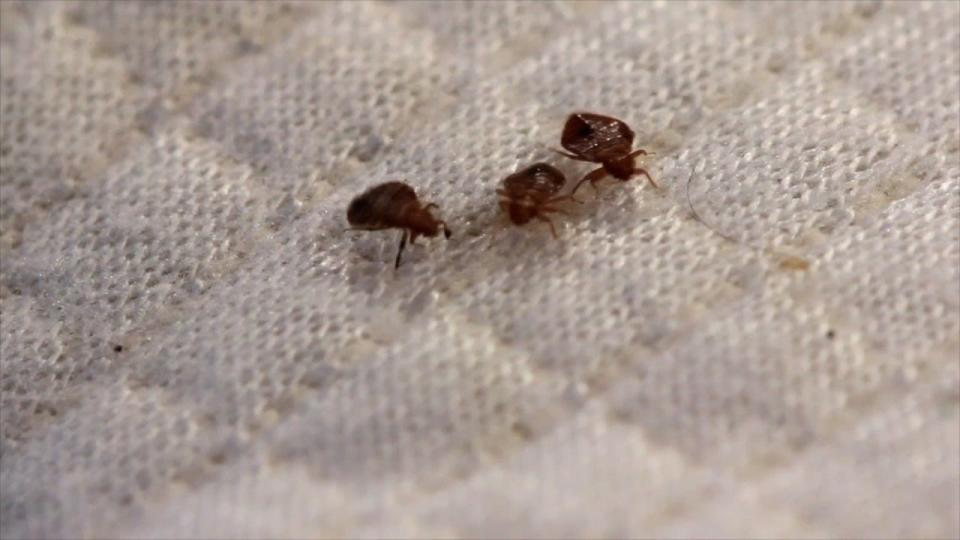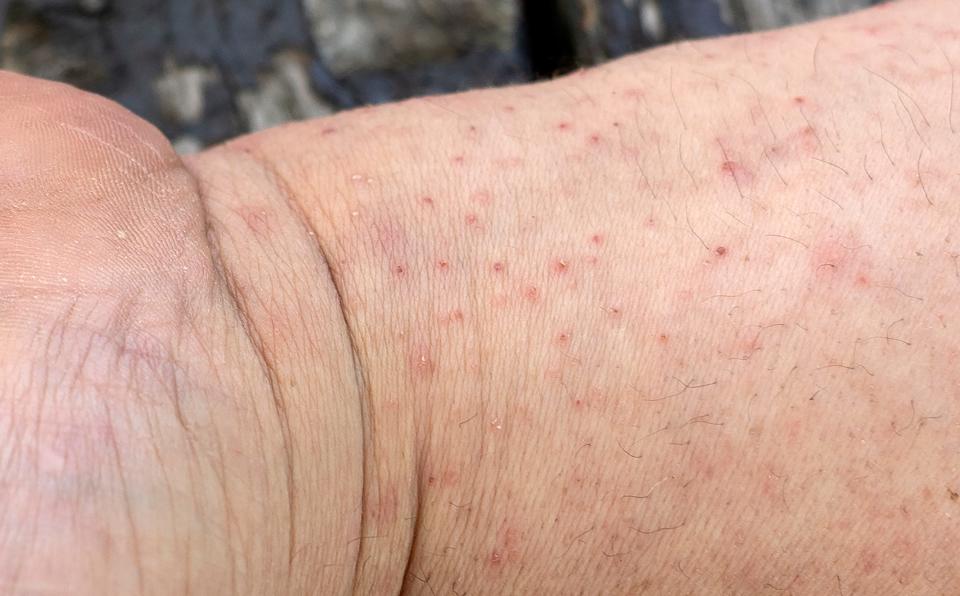Three Florida cities in top 50 in US when it comes to bedbugs. 11 things to know
There are times when you just don't want to be No. 1, and being at the top of the list for the worst cities in the U.S. for bedbugs is one of them.
The good news is that Florida isn't No. 1.
The bad news is that three Florida cities were in the top 50.
Orkin released its report on the Top 50 Bed Bug cities Monday. So hold on as we crawl into the report and its findings.
The bedbug cities list is based on treatment data from metro areas where Orkin performed the most bed bug treatments between Dec. 1, 2022, and Nov. 30, 2023. The ranking includes both residential and commercial treatments.
Florida cities among top 50 for bedbugs
Florida has three cities ranked among the top 50 when it comes to bedbugs, according to Orkin:
31: Tampa, which moved up 10 spots from last year's report
45: Miami
46: Orlando, which moved up 1 spot from last year's report
What are the top 10 cities for bedbugs?
Chicago had the dubious honor of being No. 1 for the fourth year in a row, according to Orkin. The top 10 were:
Chicago
New York
Philadelphia
Cleveland-Akron, Ohio
Los Angeles
Detroit
Washington, D.C.: Making our skin crawl, literally.
Indianapolis
Charlotte
Champaign, Illinois
What do bedbugs look like? Can you see them with naked eye?

Bedbugs are typically 3/16 of an inch long and red to dark brown in color. They can range in size from 1mm to 7mm, which is roughly the size of Lincoln’s head on a penny, according to the Centers for Disease Control.
“While bedbugs are visible to the naked eye, they are excellent at hiding. Involving a trained professional at the sight of a bedbug introduction is recommended,” said Ben Hottel, Orkin entomologist.
They're mostly nocturnal and come out of hiding to take blood meals from sleeping humans. Just what we needed to hear to get a good night's sleep.
These pests are hematophagous, which means blood is their only food source, Orkin said.
Female bedbugs can deposit one to five eggs a day and may lay 200 to 500 eggs in their lifetime.
Adult bedbugs can survive 6 to 7 months without feeding, and have been known to live in abandoned houses for a year, according to the University of Florida's Institute of Food and Agricultural Sciences.
Bedbugs can hitch a ride in luggage, purses, clothes, personal belongings
Bringing back a souvenir after a trip is a nice memento. What you don't want to bring back home are bedbugs.
The tiny insects can cling to items such as luggage, purses and other personal belongings, moving from one place to another location with ease. And this includes those bargains you find at yard sales or on the side of the road.
“Bedbugs are extremely resilient, making them difficult to control,” said Hottel.
Where are bedbugs usually found?
Bedbug infestations usually occur around or near the areas where people sleep, the CDC said.
They hide during the day in places such as seams of mattresses, box springs, bed frames, headboards, dresser tables, inside cracks or crevices, behind wallpaper, or any other clutter or objects around a bed.
Bedbugs can travel over 100 feet in a night but tend to live within 8 feet of where you sleep, the CDC said. Think about that as you get ready for bed.
Do bedbugs spread disease?
Bedbugs are not known to spread disease, the CDC said.
However, they can be annoying and lead to loss of sleep. Bites can lead to scratching, which could cause a secondary skin infection.
Signs of a bedbug infestation
The bedbugs’ exoskeletons after molting,
Bedbugs in the fold of mattresses and sheets,
Rusty–colored blood spots due to their blood-filled fecal material they excrete on the mattress or nearby furniture, and
A sweet musty odor.
How do you know if you've been bitten by bedbugs?

When bedbugs bite, they inject an anesthetic and an anticoagulant that prevents a person from realizing they are being bitten, the CDC said.
"Most people do not realize they have been bitten until bite marks appear anywhere from one to several days (sometimes up to 14 days) after the initial bite. The bite marks are similar to that of a mosquito or a flea — a slightly swollen and red area that may itch and be irritating.
"The bite marks may be random or appear in a straight line. Other symptoms of bedbug bites include insomnia, anxiety, and skin problems that arise from profuse scratching of the bites."
A bedbug bite affects each person differently. Bite responses can range from an absence of any physical signs of the bite, to a small bite mark, to a serious allergic reaction.
What's the best way to treat a bite from a bedbug?
The best way to treat a bite is to avoid scratching the area and apply antiseptic creams or lotions and take an antihistamine, the CDC said.
Top 10 tips to avoid or control bedbugs
The Environmental Protection Agency offered these tips to help you avoid or control bedbugs:
Make sure you really have bedbugs and not fleas, ticks or other insects. If you're not sure, show pictures to your local extension agent.
Don't panic. It can be difficult to eliminate bedbugs, but it’s not impossible so don't throw everything away - and possibly spread the problem.
Think through your treatment options. If you decide to use pesticides, follow directions or hire a professional.
Reduce the number of hiding places by cleaning up the clutter. Don't give them more places to hide. Encase your mattress and box spring.
Regularly wash and heat-dry your sheets, blankets, bedspreds and any clothes that touch the floor. Don't forget the laundry container or hamper.
Do-it-yourself freezing might not be reliable. Freezing can kill bedbugs but home freezers may not be cold enough.
Kill bedbugs with heat but be very careful. It takes special equipment and very high temperatures (over 113 degrees) to kill the insects. Plastic bags in the sun might work if the temperature is hot enough.
Don't pass your bedbugs on to others. Don't throw out an infested mattress or furniture. Destroy them to make sure nobody else takes bedbugs home with them.
Vacuuming can help. Vacuum rugs, floors, upholstered furniture, under beds and all cracks and crevices in the room and don't forget to change the bag after each use. Put it in a sealed plastic bag and put in an outside garbage bin.
Hire experience, responsible professional. This can increase your chance of success in getting rid of the pests.
The University of Florida IFAS added a few more tips:
Place bed posts in glass dishes. Bedbugs cannot climb smooth surfaces and this will prevent further infestation in the mattress, as long as the bed or bedding doesn't touch the walls or floor.
Wash all bedding and clothes with soap and borax additive, dry at a high temperature. Dry clean pillows and drapery.
Inspect your luggage when you return from a trip. Leave belongings in a hot car for 24 hours and run clothing through the dryer.
Build a bedbug interceptor trap
The University of Florida's Institute of Food and Agricultural Sciences explained how to build a bedbug trap using household items.
This article originally appeared on Treasure Coast Newspapers: Florida bed bugs: Top cities on Orkin list, how to get rid of them

